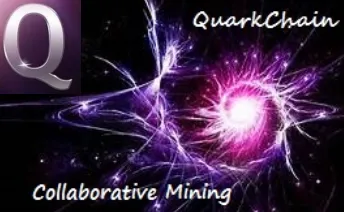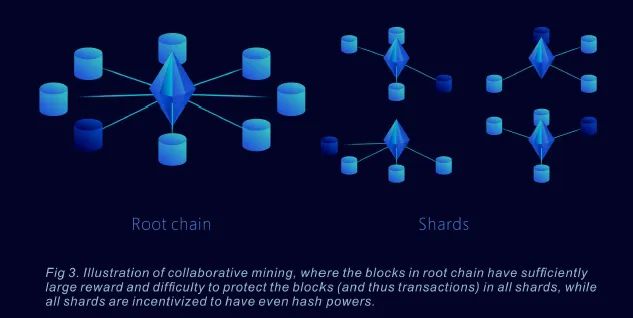
In the crypto world there are many ways to get miners to adopt and mine new coins. BTC rewards miner based on who can mine the transaction the fastest, others try to get pools to cluster together and reward them for completing a transaction. But some are now turning to a basic economic principle called “game theory”.
Quark Chain is one of those who is trying to create an environment where miner will come together to form cluster nodes to mine the transactions that will be passing through their network. They are trying to create a mining environment where the miners will collaborate with each other to complete a task. This requires that multiple miners work as one to complete a task. The increase in number of miners means nore nodes and higher transaction speeds. But how do they get the various miners to work together. This is where ‘game theory” plays a role in the Quark Chain economy.
The important factor facing miners is how to maximize their potential profit based upon their hash power. Under BTC it is a fierce competition between miners who can create the largest mining pool with the fastest mining time. This means that smaller miners are pushed out, or left with very small profits. In the end this means a more centralized system where only a few miner control the majority of the mining, thus creating a possible double-spending attack situation where one mining pool could accumulate a 51% stake and take over the system. Quark Chain said in their whitepaper:“If the blockchain is sufficiently decentralized, reaching a more than 51% hash power will be extremely costly for a single entity (a miner or an owner of a mining pool).”
Quark Chain plans to reduce the above scenario from happening by creating an economic system where the minors are encouraged to form clusters that work in a collaborative fashion. They say in their whitepaper:
“The goal of collaborative mining is to design incentive mechanisms and difficulty algorithms so that:
Hash powers are incentivized to distribute evenly among the shards. This ensures that all shards are mined evenly and thus the system throughput (TSP) increases as the number of shards increases.
The root chain has a significantly large portion of hash power (over 50%) over the whole has power network. This prevents double spending attacks, and a malicious miner needs at least 50% *50% = 25% power to perform an attack.”
To do this Quark Chain has turned to economic modeling to create its’ own economic environment for miners to thrive in. It is creating a marketplace where miners could choose any block that best fits their hash power. Since each blockchain has different rewards and difficulties, then miners must choose which are best suited for their mining equipment. This allows each party in the system to pursue their own interests, but following a collective behavior that benefits all parties in the system. Everyone shares in the profits from the successful completion of a transaction. This allows weaker miners to collect rewards without having to join a mining pool.

Even while working in a collaborative community, there would still be competition within the cluster, and one miner or a group of miners might try to dominate the cluster, To avoid this Quark Chain has put in place dis-incentives for trying to monopolize a node cluster. They are implementing a long studied economic concept of “game theory”.
Game theory involves making a decision base upon what you think another party will do in the same situation. Below is presented a hypothetical example of the Quark Chain economic payoff in a Quark cluster node.
In the Quark Chain cluster economy each miner would be faced with the same set of circumstances. You have to decide if you should collaborate or not collaborate. In the Quark Chain model they have create an environment that incentivizes participation in the node cluster. If you participate you can receive an incentive for joining, this does not mean you have to collaborate, you can make money by just participating as long as others are collaborating. However as you see from our Miner matrix, you would make less than if you collaborated ( 3 for collaborating, 2 for not)

Quark Chain has also incorporated into their model the dis-incentive for not collaborating ( payoff of 2 instead of 3) and even more severe if everyone is not collaborating, resulting in a loss for all. So there is a clear incentive for all parties who join the cluster nodes to collaborate. This in economics is called the Nash equilibrium.
The Nash equilibrium is an important concept in game theory referring to a stable state in a game where no player can gain an advantage by unilaterally changing his strategy, assuming the other participants also do not change their strategies.
So if a miner enters the Quark Chain node cluster, they are best off if they pursue a strategy of cooperation and collaborative mining, rather than a purely individualized self-interest. This means that in choosing which blockchain to pursue, they still have take into consideration what others will be doing. Based on the blockchain matrix presented above, they should definitely collaborate to maximize their profits. This will attract more miners as they do not have to be overly concerned if they can compete against the big miners.
In the end it all comes down to each individual miner and the decisions they make in joining a node. They can choose to make more and share the wealth or risk making less (or even a loss) by going it alone. This means that a single miner or pool of miners cannot take control of a node and force out weaker miners. The Quark Chain environment makes sure that even the weaker miners will play a roll and get paid for their part in completing the transaction.
To be sure this is theoretical, and is based on the assumption that all parties will act in the best interest of their node. But there will still be malicious miners trying to take advantage of the situation. This is why Quark Chain also incorporated into their verification protocol the ability to confirm a node by allowing multiple honest nodes in a cluster to run as a super-full node. This means if a malicious node tries to disrupt the validation, it can still be validated by the remaining nodes.
Game theory is a great concept to create a collaborative environment, and if executed properly, it should create the scalability that Quark Chain is promising. I am looking forward to seeing the implementation of this concept into the blockchain and the success it may bring to scalability.
Appreciate your comments and claps!
Relyn and Dean Kruger, Crypto Enthusiast